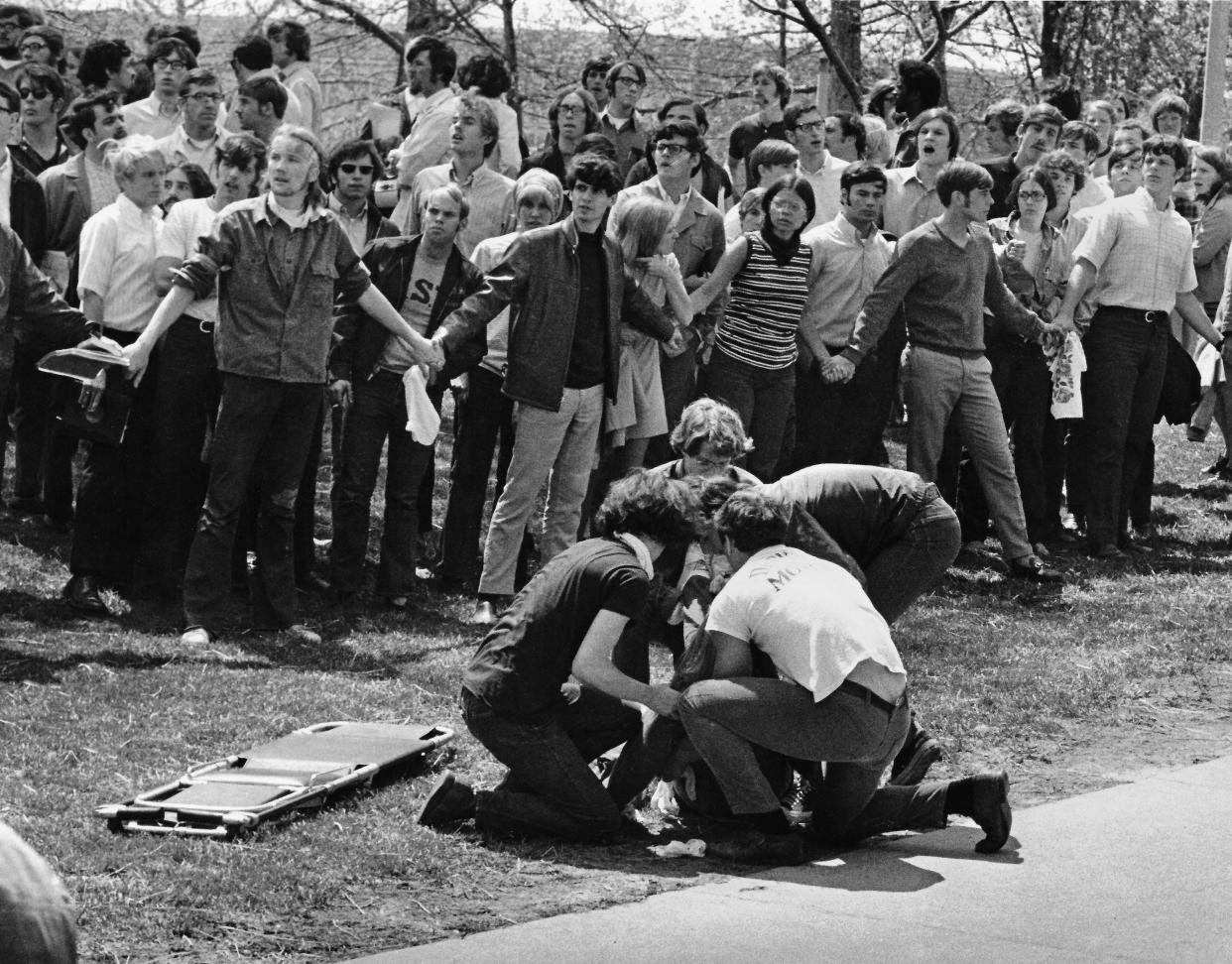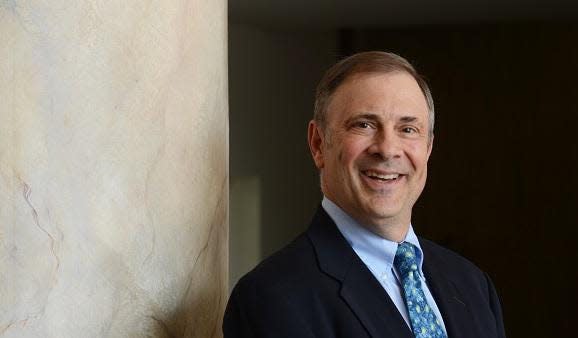54 years after Kent State: What limits are there to freedoms of speech and protest?
Professor Dan Kobil teaches constitutional law at Capital University Law School in Columbus.
The 54th anniversary of the tragedy at Kent State University where Ohio national guardsmen fired into a crowd of anti-war protestors killing four students was Saturday.
As we again confront a wave of demonstrations at campuses across the country regarding the war in Gaza, it is important to be mindful of both the protections and limitations of the U.S. Constitution when it comes to protests.
Demonstrators are acting consistently with the First Amendment, and within an American tradition of civil disobedience, when they engage in peaceful protest. Though the First Amendment provides that government cannot limit freedom of “speech,” courts have long recognized that speech includes conduct — so long as it communicates a message.
'Utter turmoil': Former National Guardsman reflects on Kent State tragedy of May 4, 1970
How far can protests go legally?
Examples of expressive conduct may include marches, sit-ins, and even flag burning.
American thinkers from Thomas Jefferson to Henry David Thoreau to Martin Luther King have all endorsed acts of peaceful rebellion to bring government leaders to the negotiating table, which is the goal of many campus protestors.
However, when protestors move farther away from words and engage in destructive actions, they forfeit certain protections of the First Amendment. That is because conduct itself can typically be regulated and punished without offending the Constitution.
Protestors who destroy university property or invade classrooms and administrative buildings can be disciplined for this conduct, despite claims that they were acting in order to draw attention to their message.
The Supreme Court has held that anti-war demonstrators who burned their draft cards could be punished for destroying important Selective Service documents, so long as the government was not using the law to suppress the protestors’ message.
Does free speech come with restrictions?
The First Amendment also does not prevent the government from enforcing reasonable time, place, and manner restrictions on speech, as long as the rules are applied even-handedly. Thus, a government actor such as Ohio State University could impose reasonable limits on the hours of all protests, or the decibel levels of sound amplification systems.
What about encampments?
OSU’s prohibition against overnight encampments would likely be viewed as a reasonable restriction on the “manner” of speech, assuming it has been enforced consistently in the past.
The Supreme Court upheld a U.S. Park Service regulation that prohibited sleeping in Lafayette Park overnight as a reasonable “manner of speech” regulation, even applied to protestors attempting to call attention to the plight of the homeless.
Finally, the Constitution does not protect speech that goes beyond forceful advocacy, and in a few narrow circumstances words themselves can be punished if they are sufficiently threatening. For instance, if campus protestors urged imminent violence against university personnel or students, those words could likely be a grounds for punishment notwithstanding the protections of the First Amendment.
Ohio State protest wasn't peaceful. Activist, supporters should stop clutching their pearls
Supreme Court precedent makes clear that speakers who advocate imminent unlawful conduct can be punished if their words are uttered in circumstances where serious lawless conduct is likely to occur.
When does the response go too far?

Of course, even when the government is acting within its authority to regulate protests, it cannot use excessive force. To most observers, the guardsmen at Kent State shooting into a crowd of unarmed protestors was a tragic example of the improper use of force.
The military-style deployment of highly armed police at campus protests likewise could invite the escalation of violence. Institutions of higher learning, which seek to impart values of tolerance, civil discourse, and respect for others must explore every possible means of deescalating tense situations before resorting to force.
Ted Carter, you turned campus into military zone. Your goons crushed protester's rights.
Northwestern University and Brown University recently succeeded in doing just that, avoiding violence by negotiating agreements with their protesting students.

In the end, the First Amendment is a powerful tool that promotes democracy by limiting the power of government to squelch dissenting views. But it is up to us as citizens to exercise these freedoms in a responsible manner, consistent with the enjoyment of the blessings of liberty.
Professor Dan Kobil teaches constitutional law at Capital University Law School in Columbus.
This article originally appeared on The Columbus Dispatch: What are the limits of the rights to protest and free speech in U.S.?
